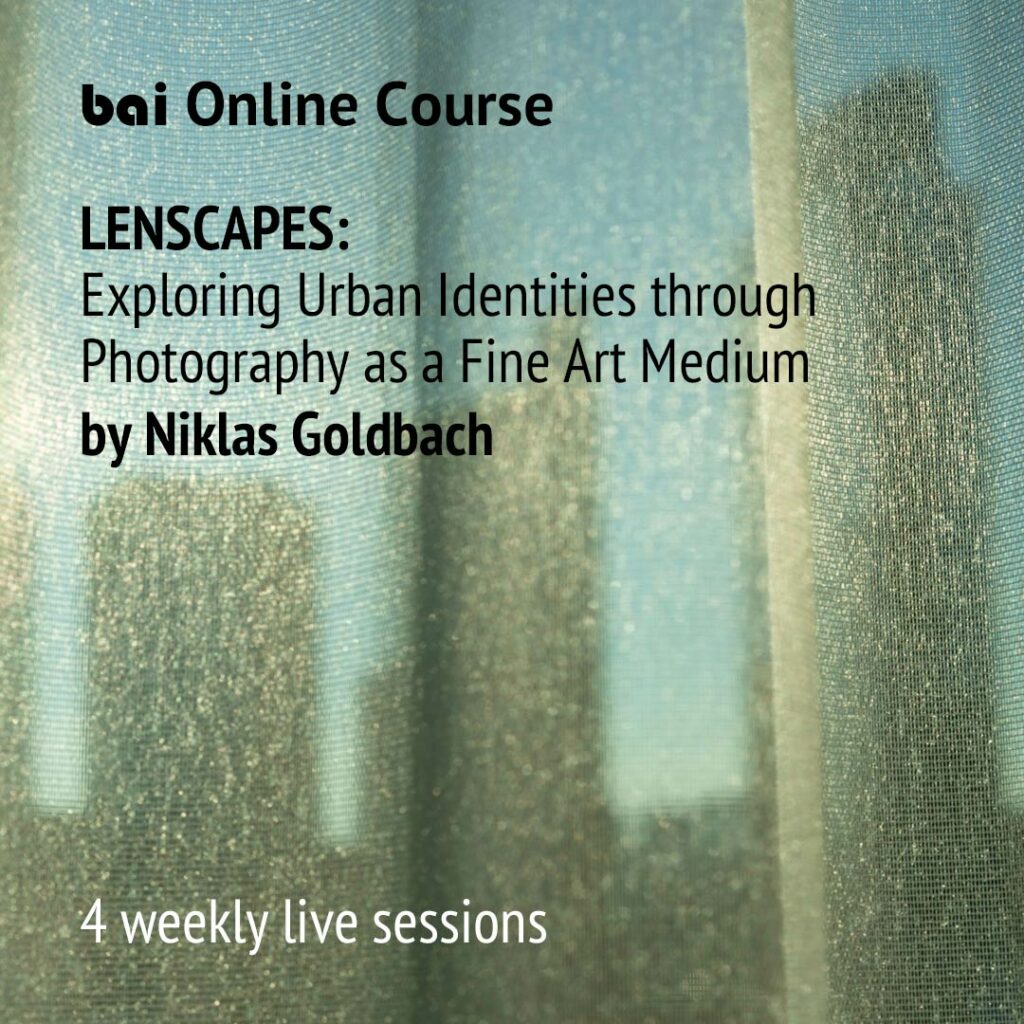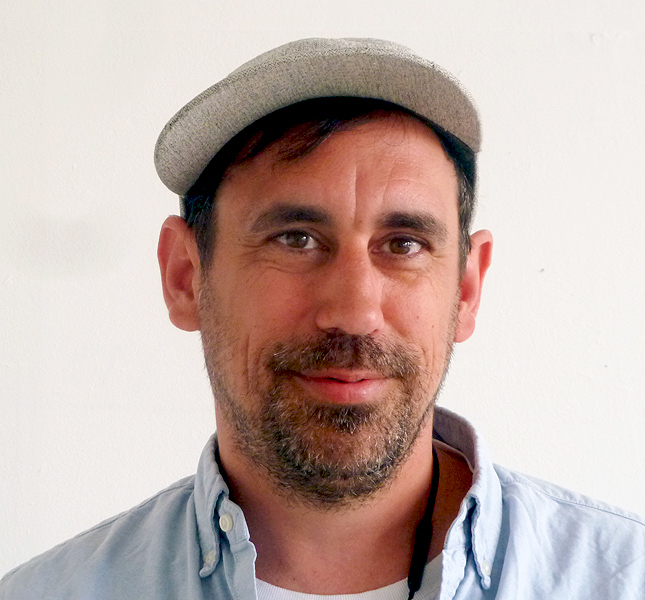Current Status
Price
Get Started

Enroll now as seats are limited:
Min. seats: 5 | Max. seats: 30 | Language: English
- In this course you will expand your knowledge about the history of the medium and how to apply different conceptual, theoretical and artistic aspects to your projects.
- Each session tries to address a specific theme from different angles by providing you insight into the work of other artists and historical photographers by offering you an enriching and inspiring conceptual framework that can be applied to your own individual creative process.
- A weekly assignment and suggested literature will accompany you through your week (for all assignments it necessary to photograph on more than one day a week!)
- Reference materials (essays, book excerpts, web links) will be provided. You will also have the opportunity to share collectively your thoughts and concerns as creators and open up discussions about your ideas in our FORUM.
- For the last session of the course you will have the opportunity to develop and present an individual artistic project by applying and combining the historical, conceptual, theoretical and technical aspects presented and discussed in the weeks before.
Online Course LENSCAPES: Exploring Urban Identities through Photography as a Fine Art Medium by Niklas Goldbach
“This four-week online course explores the limits and possibilities of photography as an artistic medium through a series of four live sessions with lectures and assignments.
This course delves into the complexities of urban landscapes and their unique identities through photography. In four weeks, you’ll get an introduction how to capture diverse aspects of a city, including its people and culture. Using your camera as a tool, we’ll cover various techniques and approaches to photography, emphasising its artistic potential in telling stories, following conceptual approaches, and capturing the distinctive visual characteristics of urban spaces.
In the first part of the course, we’ll explore how man-made environments shape and reflect the social, cultural, and historical contexts of a city. We’ll investigate the ways in which different neighbourhoods and communities have their own distinct identities, and how they are communicated through architecture, public spaces and other urban features. We will discuss the different sub-genres and approaches of photography which often overlap: street photography, documentary photography and architectural photography.
In the second part of the course, we’ll examine the role of identity politics in photography and how photographers can use their art to engage with social and political issues. We’ll look at the work of photographers and artists who have used their camera to challenge dominant narratives or amplified the voices of marginalised communities. You’ll have the opportunity to use your own photography to explore issues and aspects of identity and representation, and develop ideas how to contribute to the ongoing dialogue about the role of art and photography in shaping our understanding of the world around us.
As a guideline, this course works with concrete tasks: each lecture concludes in an exercise, which the participants can use as a guideline or inspiration for their next project. The assignments will be completed over the course of one week and have to be uploaded before the next session: they will be presented and discussed within the group.” (Text & image by courtesy of Niklas Goldbach)
Your BAI Online Course Instructor

In his videos, photographies and installations, Niklas Goldbach is involved in the relation between architecture and necropolitics within modern traditions and postmodern cities. Established between reality and fiction, Goldbach’s works use architectural concepts and elements to create ambiguous perceptions of man-made environments. He presented his works in numerous solo shows, group exhibitions, and festivals in venues such as the Museum der Moderne, Salzburg, Museo Reina Sofia, Madrid, Mori-Art Museum, Tokyo, Neuer Berliner Kunstverein n.b.k., documenta 14 public programs, Berlinische Galerie – Museum of Modern Art Berlin, Cornerhouse, Manchester, National Taiwan Museum of Fine Arts, Centre Pompidou, Paris, Houston FotoFest Biennial, Bergen Assembly, Württembergischen Kunstverein Stuttgart and the Short Film Festival Oberhausen.
www.niklasgoldbach.de
Save the dates in your calendar
The dates for the live lectures for this course will be published soon. You will also receive an email reminder for each video conference before it takes place.
Recording of Live Sessions
We record the live sessions so that they remain available for a logged in course participant until one week after the last session. Please check before booking a course the technical requirements as listed below.
Access to content
You will get access to the course content and lessons in our learning management system once you are enrolled.
Technical requirements
We will use the Zoom Meeting application for the live sessions. You need a stable internet connection. There are two ways to access the live meeting:
1. Via the Zoom app
Before joining a Zoom meeting on a computer or mobile device, you can download the Zoom app here: https://zoom.us/download
or on: https://apps.apple.com/de/app/zoom-cloud-meetings/id546505307
Otherwise, you will be prompted to download and install Zoom when you click our join the zoom meeting link.
2. Via Google Chrome Browser on https://zoom.us/join
If you are using Google Chrome to join a meeting, you will see a dialog box to launch the Zoom application.
https://support.zoom.us/hc/en-us/articles/201362593-Launching-Zoom-from-a-web-browser
Here you find more info: https://youtu.be/hIkCmbvAHQQ
We will provide the Zoom Meeting ID before each meeting. BAI will record the live sessions.
For Windows, macOS, and Linux:
https://support.zoom.us/hc/en-us/articles/201362023-System-requirements-for-Windows-macOS-and-Linux
In addition to the Online Program, the Berlin Art Institute offers an international Studio Program, a Residency Program, Portfolio Courses, a Spring Academy, an Arts Incubator, a Friends Program, and the presentation and exhibition display 404 | BAI.
If you have any questions, please contact us at ecourses@berlinartinstitute.com

